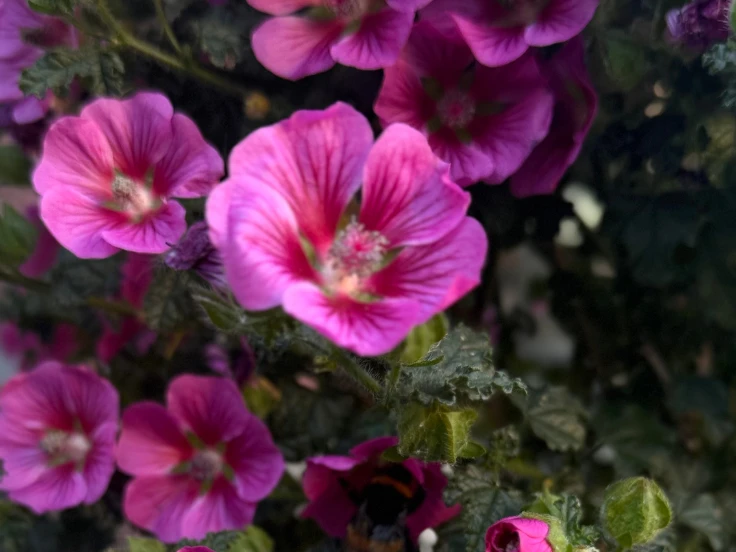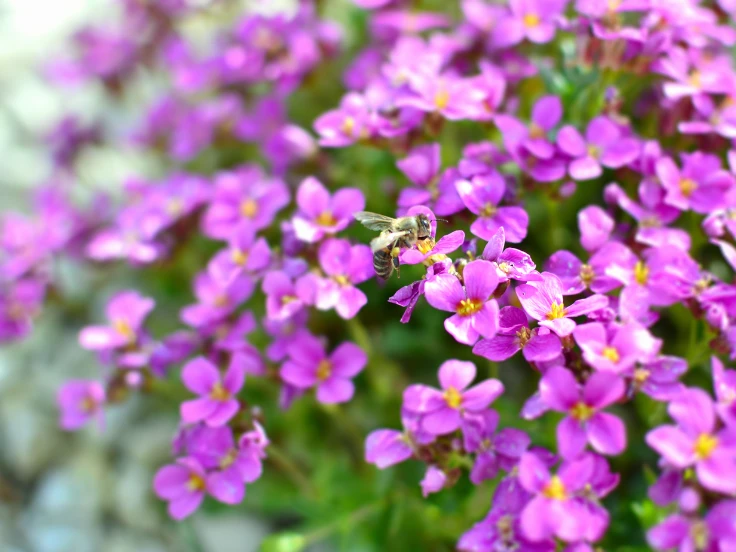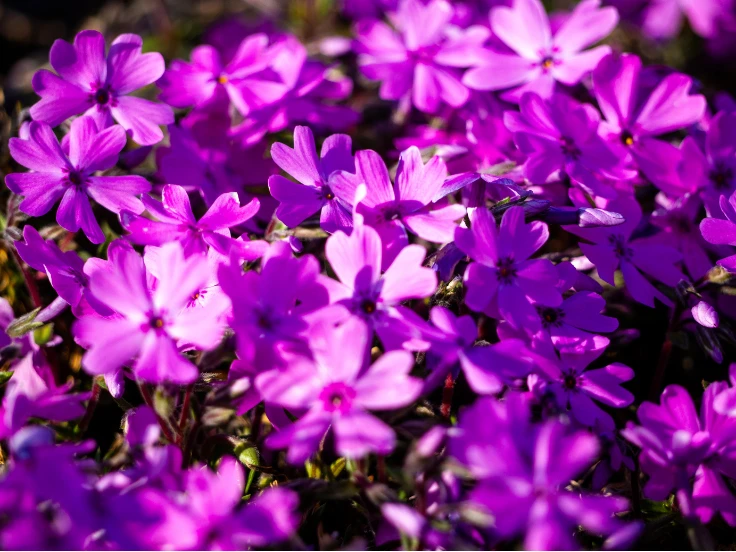Purple plant pink flowers are a stunning way to bring vibrant color, elegance, and life to any garden. These plants combine deep purple foliage with delicate or bright pink blooms, creating a striking contrast that instantly enhances your outdoor space. Beyond their visual appeal, purple plant pink flowers attract pollinators such as bees, butterflies, and hummingbirds, supporting local biodiversity while adding movement and energy to your garden.
In this comprehensive guide, we will explore the most popular purple plant pink flowers, share expert care tips, discuss landscaping ideas, and highlight how to create a thriving, colorful garden. Whether you are designing a small patio garden or a large landscape, incorporating purple plant pink flowers ensures year-round beauty, versatility, and ecological benefits.
Top Purple Plants with Pink Flowers

Purple plants with pink flowers offer both beauty and ecological benefits. They are versatile in landscaping and can be used in borders, containers, or as ground covers. The following sections highlight some of the best purple plants with pink flowers for various garden types. Additionally, these vibrant combinations add depth, contrast, and year-round interest to any outdoor space.
Purple Heart: A Popular Purple Plant with Pink Flowers
Purple Heart is a low-growing plant known for its deep purple leaves and delicate pink flowers. It is native to Mexico and thrives in warm, well-drained conditions, making it one of the most popular purple plants with pink flowers. Additionally, its vibrant foliage and easy-care nature make it ideal for borders, hanging baskets, and ground covers, adding a bold splash of color to any garden.
-
Care Tips: Bright indirect light, moderate watering, well-drained soil.
-
Uses: Ground cover, hanging baskets, borders.
-
Special Note: Heat-tolerant and easy to maintain, suitable for beginners.
Purple Daydream Loropetalum: Evergreen Purple Plant with Pink Flowers
Purple Daydream® Dwarf Loropetalum is a compact evergreen shrub with dark purple foliage and bright pink flowers. It is drought-resistant and deer-tolerant, making it highly versatile in landscaping. Additionally, this stunning purple plant with pink flowers maintains its rich color year-round and provides a striking contrast when paired with lighter green or silver-leaved plants.
-
Care Tips: Full sun to partial shade, occasional pruning, minimal watering.
-
Uses: Borders, hedges, patio containers.
-
Special Note: Blooms primarily in spring but keeps colorful foliage throughout the year.
Persian Shield: Tropical Purple Plant with Pink Flowers
Persian Shield is a tropical plant with metallic purple leaves and soft pink flowers. This plant adds dramatic color to both indoor and outdoor spaces, making it a unique choice among purple plants with pink flowers. Moreover, its shimmering foliage and long-lasting blooms make it perfect for adding texture and vibrancy to shaded garden areas or decorative containers.
-
Care Tips: Bright indirect sunlight, high humidity, consistent watering.
-
Uses: Accent plant, container centerpiece.
-
Special Note: Cannot tolerate frost; best grown as an annual in cooler climates.
Hibiscus ‘Corona del Rey’: Showy Purple and Pink Flowering Plant
The Corona del Rey Hibiscus produces large, showy purple flowers edged with pink. This tropical variety is perfect for creating a vibrant garden focal point. Furthermore, this striking purple plant with pink flowers thrives in sunny locations, offering continuous blooms throughout the warmer months and enhancing the visual appeal of any outdoor space.
-
Care Tips: Full sun, moderate watering, well-drained soil, frost protection in cold regions.
-
Uses: Borders, tropical-themed gardens, patio pots.
-
Special Note: Needs pruning to maintain bushy shape and encourage continuous blooms.
Cistus crispus:Hardy Purple Plant with Pink Flowers
Cistus crispus is a hardy Mediterranean shrub featuring purple-pink flowers. It thrives in dry, rocky soils and full sun, making it an excellent choice for low-maintenance gardens.
-
Care Tips: Full sun, well-drained soil, minimal watering, occasional pruning.
-
Uses: Borders, rock gardens, xeriscaping.
-
Special Note: Ideal for Mediterranean or drought-tolerant landscapes.
Benefits of Purple Plants with Pink Flowers
Purple plants with pink flowers provide more than just decorative value. Incorporating them into your garden brings numerous benefits:
-
Visual Appeal: Their contrasting purple foliage and pink blooms enhance any landscape, creating a vibrant and elegant look.
-
Attract Pollinators: Bees, butterflies, and hummingbirds are drawn to these flowers, promoting ecological balance.
-
Low Maintenance: Many varieties are drought-tolerant and disease-resistant, reducing care requirements.
-
Versatility: Suitable for borders, containers, ground covers, and accent plants in different garden styles.
-
Seasonal Interest: Different species bloom at various times, ensuring your garden maintains color and texture throughout the year.
Purple plants with pink flowers can transform ordinary garden spaces into striking areas full of life and movement, creating both beauty and environmental benefits. For expert guidance on selecting and maintaining vibrant flowering plants, you can explore resources from Royal Horticultural Society (RHS), which provides in-depth care tips and planting advice for gardeners of all levels.
How to Care for Purple Plants with Pink Flowers

Proper care is essential for maintaining the health and vibrancy of purple plants with pink flowers. Follow these tips to ensure optimal growth. Additionally, consistent attention to watering, sunlight, and soil conditions will help these stunning plants flourish and display their full range of color throughout the growing season. For gardeners interested in exploring more options, check out our guide on flowering plants for shade to discover varieties that thrive in lower-light areas while adding rich hues to your garden.
Sunlight
Most of these plants thrive in full sun to partial shade. Adequate sunlight ensures rich foliage color and abundant flowering.
Soil Requirements
Well-drained soil is critical to prevent root rot. Amend heavy soils with organic matter for better drainage and nutrient content.
Watering
While many purple plants with pink flowers are drought-tolerant, regular watering during dry periods promotes healthy growth and vibrant blooms. Avoid overwatering to prevent fungal issues.
Fertilization
A balanced, slow-release fertilizer in early spring supports growth and flowering. Excessive fertilization can lead to more foliage but fewer flowers.
Pruning and Deadheading
Prune plants after flowering to maintain shape and remove damaged stems. Deadhead spent flowers to encourage continuous blooming.
Landscaping Ideas with Purple Plants and Pink Flowers

Purple plants with pink flowers can be incorporated into your garden in multiple ways. Moreover, their versatile nature allows them to complement various landscape styles from modern minimalist designs to lush cottage gardens bringing harmony, contrast, and year-round color to your outdoor space.
Contrasting Borders
Pair purple-leaved plants with pink-flowering varieties like Hibiscus or Loropetalum to create bold and colorful borders.
Container Gardening
Use dwarf varieties such as Purple Daydream® Dwarf Loropetalum in containers. Mix with complementary plants to create a cohesive design.
Ground Covers
Purple Heart works as an attractive ground cover that suppresses weeds while adding vibrant color.
Wildlife-Friendly Gardens
Planting purple plants with pink flowers attracts pollinators like bees, butterflies, and hummingbirds, supporting the local ecosystem.
Common Varieties and Features
| Plant | Flower Color | Foliage Color | Ideal Location | Notes |
|---|---|---|---|---|
| Purple Heart | Pink | Deep purple | Part shade | Great for containers, hanging baskets |
| Loropetalum | Pink | Purple | Full sun to partial shade | Drought-tolerant, deer-resistant |
| Persian Shield | Pale pink | Metallic purple | Indoors/outdoors | Needs humidity, tropical plant |
| Hibiscus | Pink-edged purple | Green | Full sun | Frost-sensitive, tropical climate |
| Rock Rose | Purple-pink | Green | Dry, rocky soils | Mediterranean garden ideal |
Frequently Asked Questions (FAQs)
Q1: Can Purple Plants with Pink Flowers Thrive Indoors?
Yes, varieties like Persian Shield and Purple Heart can grow indoors if they receive sufficient light, humidity, and water. Placing them near a bright window and maintaining consistent moisture will ensure healthy growth.
Q2: Are These Plants Suitable for Small Gardens?
Absolutely. Compact and dwarf varieties are perfect for small spaces, patios, and container gardens, making purple plants with pink flowers a versatile choice for limited areas.
Q3: How Do I Encourage Continuous Blooming?
Regular watering, well-drained soil, balanced fertilization, and deadheading spent flowers will help ensure ongoing blooms in purple plants with pink flowers. This care routine promotes vibrant and long-lasting flowering.
Q4: Do These Plants Attract Wildlife?
Yes, purple plants with pink flowers attract pollinators such as bees, butterflies, and hummingbirds. Including them in your garden supports local biodiversity and enhances ecological balance.
Q5: Can They Tolerate Drought?
Many species, including Loropetalum and Cistus, are drought-tolerant once established. This makes them ideal for low-maintenance gardens while still providing vibrant color and beauty.
Conclusion
Incorporating purple plants with pink flowers into your garden not only brings elegance and color but also provides ecological benefits. Additionally, they are versatile, low-maintenance, and visually striking, which makes them suitable for all types of gardens. Whether used in borders, containers, or as ground covers, these plants create a vibrant and inviting environment. Moreover, they attract pollinators, supporting biodiversity and enhancing your garden’s overall health.
By selecting the right species and following proper care techniques, your garden can flourish with purple plants with pink flowers, offering year-round beauty, color, and charm. Furthermore, incorporating complementary plants can improve texture and contrast. For instance, pairing them with green foliage or contrasting blooms enhances visual appeal.
Consequently, your outdoor space becomes more dynamic and lively. Moreover, these plants help reduce soil erosion and add charm to patios or balconies. In addition, they attract pollinators, enhancing the natural balance of your garden. As a result, your space not only looks stunning but also supports local wildlife. Finally, for lasting color and continuous blooms, explore our guide on perennial flowers that bloom all summer to enhance your garden’s beauty and resilience.


















